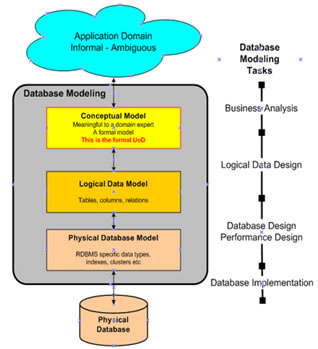Introduction
In today’s data-driven world, businesses rely heavily on their databases to store, manage, and retrieve information efficiently. A well-designed database is the backbone of many applications, and its effectiveness directly impacts the performance and scalability of the systems it supports. This is where systems analysis comes into play. By applying systems analysis techniques, businesses can build data models that not only meet their current needs but also adapt to future challenges. In this blog post, we will delve into the world of systems analysis for database design and explore how it helps in constructing efficient data models.
The Role of Systems Analysis
Before we dive into the specifics of building efficient data models, let’s first understand the role of systems analysis in the context of database design. Systems analysis is a systematic approach to understanding, designing, and improving complex systems. In the context of database design, it involves a thorough examination of the organization’s requirements, processes, and objectives to create a blueprint for an effective database system.
Here are some key aspects of systems analysis in database design:
Requirement Gathering: Systems analysts work closely with stakeholders to gather and document requirements. This includes understanding what data needs to be stored, how it will be used, and what the expected outcomes are.
Process Mapping: Analyzing and mapping existing business processes is crucial. This step helps identify data flows, dependencies, and potential bottlenecks that need to be addressed in the database design.
Normalization: Systems analysts ensure that the database is normalized to eliminate redundancy and improve data integrity. This involves breaking down data into logical structures to minimize data duplication.
Scalability: Future scalability is a key consideration. Systems analysts need to anticipate future growth and ensure that the database can handle increased data volumes without major rework.
Performance Optimization: Optimizing query performance is a critical aspect of systems analysis. Analysts work on creating efficient data access and retrieval strategies.
Data Security: Systems analysis also includes defining data security measures to protect sensitive information from unauthorized access.
Efficient Data Modeling
Now that we’ve covered the role of systems analysis let’s explore how it contributes to building efficient data models. An efficient data model is one that not only meets the current needs of the organization but also performs well and adapts to changing requirements. Here are some key principles of efficient data modeling:
Normalization: As mentioned earlier, normalization is a crucial step in database design. It involves organizing data into tables in a way that minimizes redundancy and ensures data integrity. By eliminating duplicate data, you reduce the chances of inconsistencies and improve overall database performance.
Indexing: Proper indexing is essential for efficient data retrieval. Systems analysts work on identifying the right columns to index, which speeds up query processing. However, over-indexing can also have a negative impact, so it’s important to strike the right balance.
Data Types: Choosing the right data types for columns is another aspect of efficient data modeling. Using appropriate data types not only conserves storage space but also ensures data accuracy. For example, using an integer data type for a column that stores whole numbers is more efficient than using a text data type.
Query Optimization: Systems analysts collaborate with database administrators and developers to optimize SQL queries. This involves writing efficient queries, utilizing indexes, and avoiding costly operations like full table scans.
Data Partitioning: In cases where the database is expected to handle a large volume of data, data partitioning can improve performance. Systems analysts can design data partitioning strategies to distribute data across multiple storage devices or servers.
Data Archiving and Purging: Over time, databases can accumulate obsolete data. Systems analysts can define archiving and purging strategies to keep the database lean and maintain high performance.
Scalability: Systems analysts consider future scalability when designing data models. They ensure that the database schema can accommodate growth without requiring major rework. This may involve horizontal scaling by adding more servers or vertical scaling by upgrading hardware.
Normalization vs. Denormalization: While normalization is essential for data integrity, there are cases where denormalization can improve performance. Systems analysts make informed decisions about when to denormalize certain data elements to optimize query performance.
Conclusion
Efficient data modeling is a critical component of successful database design, and systems analysis plays a pivotal role in achieving this efficiency. By carefully analyzing requirements, mapping processes, and optimizing data structures, businesses can create databases that not only store and manage data effectively but also deliver high performance and scalability.
In an era where data is a valuable asset, investing in systems analysis for database design is a strategic decision that can lead to competitive advantages, streamlined operations, and better decision-making. It’s not just about building a database; it’s about building the right database—one that serves the present and prepares for the future.



